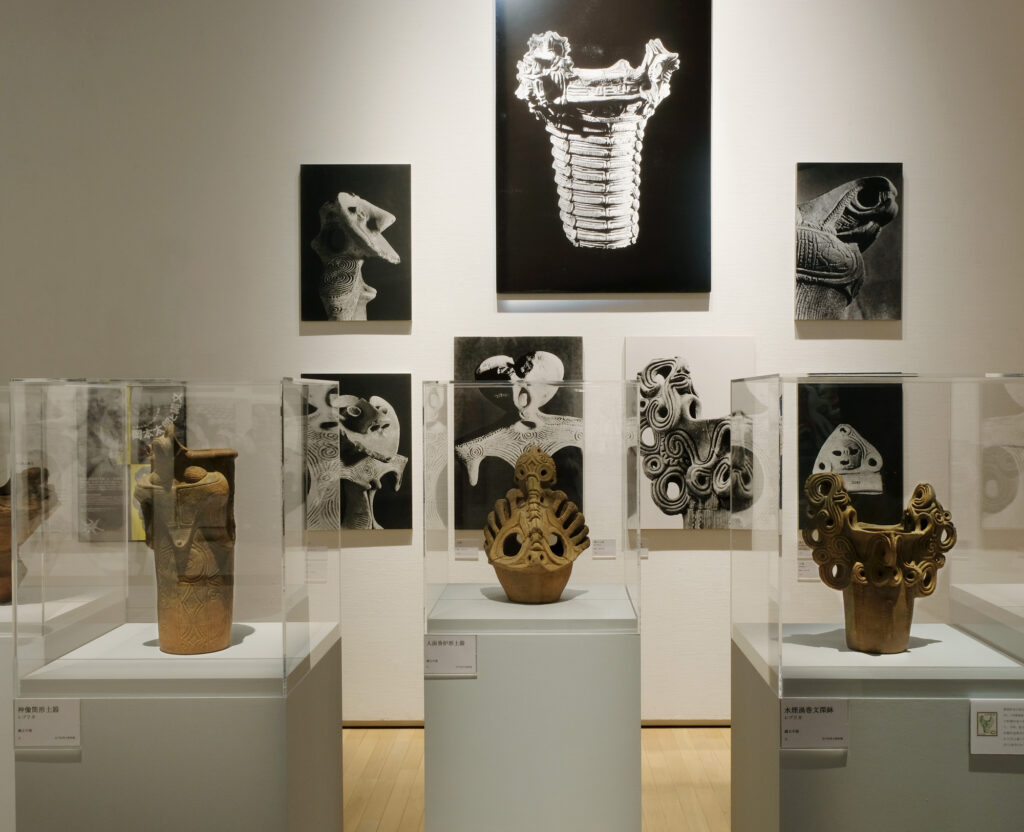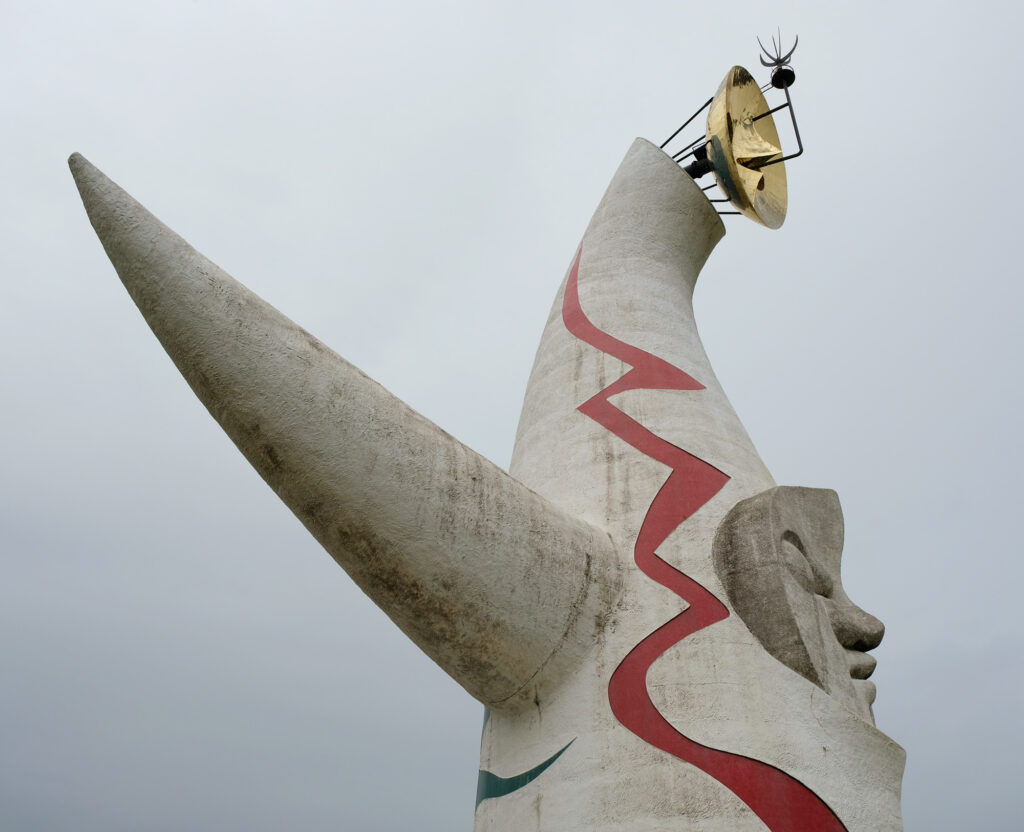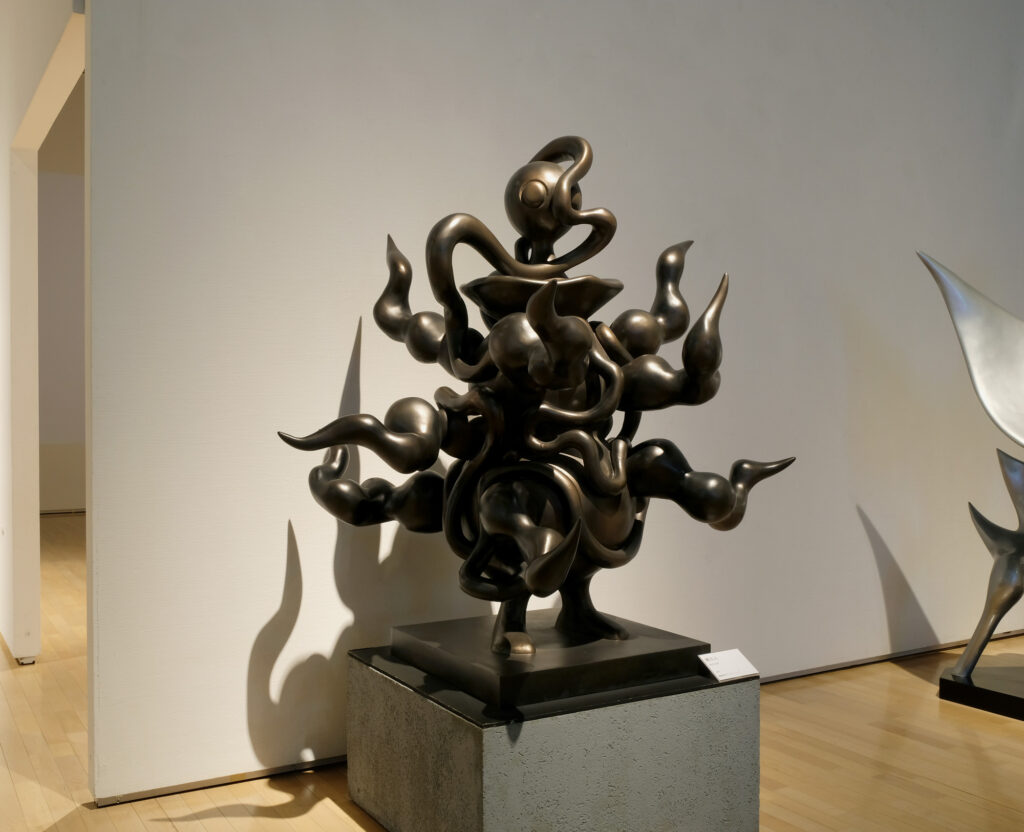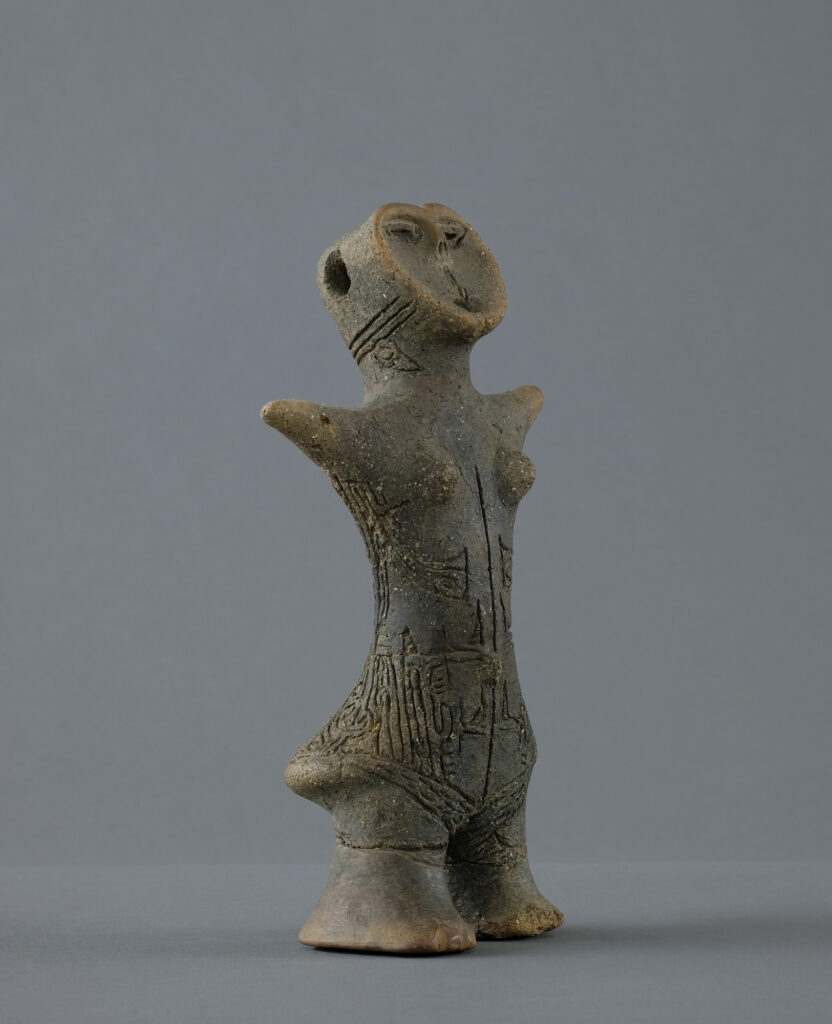Taro Okamoto’s Eyes and Man of the Jomon Period
“I felt my entire system being shaken up, a delightful revelation rushing through my veins, a robust vitality welling up and bursting. I was moved by a fundamental feeling of faith, and affinity, not only in relation to Japan or a particular ethnicity, but to humanity.” These were the words of the artist Taro Okamoto (1911–96) on his encounter with Jomon pottery.
The following year, Taro published in Mizue art magazine his seminal essay “Jomon doki ron; Yojigen to no taiwa” (On Jomon Pottery: A Dialogue with the Fourth Dimension, 1952). The contents had a major impact not only on well-informed archaeological circles but also on the masses who believed the base layers of Japanese culture could be traced back to Nara and Kyoto. Taro’s partner, Toshiko Okamoto, later revealed in her commentary for Taro’s Nihon no dento (Japanese Tradition, Kobunsha, 1956) that Taro had provided his own photographs to illustrate his article, but was told the amateur images could not be printed, and due to the short deadline, the essay came out accompanied by professional stock photos, much to Taro’s dissatisfaction. Taro made sure justice was done in Japanese Tradition, by including “On Jomon Pottery,” this time illustrated primarily with his own photographs.

The series of powerful photos displayed in Taro Okamoto: From Jomon to the Present, held this autumn at the Taro Okamoto Museum of Art, Kawasaki, capture Jomon exactly as seen in Taro’s eyes. Dynamic patterns of ridged lines swirl, rise, and splash on the photographic paper as if Taro had used the camera lens to sketch the earthenware vessels in detail. I couldn’t help also recognizing a connection between these images and the Tower of the Sun, designed by Taro as the centerpiece of Expo ’70 in Osaka.
Let’s compare the monumental sculpture, for example, with a dogu clay figurine I photographed at the Idojiri Archaeological Museum (Shiso megami zo [Mother Goddess], excavated from the Sakaue site, pictured on Bottom row image). The Jomon influence is clear as day. But the resemblance should not be dismissed as mere imitation. Taro’s fountain of thought was far grander, and he sought to read and explore the world with eyes wide open. To prove this, he created three faces on the Tower of the Sun: the “Golden Mask” at the apex, representing the future; the “Face of the Sun” in the front center, the present; and the “Black Sun” in the back, the past. The Tower of the Sun still stands today and guides us in the idea that humanity’s past, present, and future are intertwined and together form a cycle.

This brings me to another connection between Taro and Jomon: Why were some works not destroyed? As we know, many dogu clay figurines are found broken, suggesting that once they had served their purpose, they were broken and sent to the afterworld; but now and then, a dogu turns up unbroken and intact. The Tower of the Sun was scheduled to be dismantled after the expo, but the plans were postponed until finally, the decision was made in favor of preservation. According to Akiomi Hirano, director of the Taro Okamoto Memorial Museum, in Tokyo, the decision was probably based not on any real logic, but on some intuition that whispered don’t tear it down. I recalled these words and imagined the Tower of the Sun accomplishing its original purpose and then, over time, growing on us and earning its place in our Japanese hearts. Just as some dogu might have existed as symbols of their village in the Jomon period, the Tower of the Sun had outlived its duration under specified ownership and become the property of the masses.
As all of this was going on in my mind, I made my way through the museum and encountered a sculpture titled Man of the Jomon Period (1982). It was the perfect embodiment of Taro’s words in 1951.

<PAPERSKY no.61(2019)>

Jomon Fieldwork | Nao Tsuda × Lucas B.B. Interview
A conversation between ‘Jomon Fieldwork’ Photographer and writer Nao Tsuda and Papersky’s Editor-in-chief Lucas B.B. The two discuss the ways Jomon culture continues to play an important role in modern day Japan. The video was filmed at Papersky’s office in Shibuya in conjunction with Tsuda’s exhibition “Eyes of the Lake and Mother Mountain Plate” held at the Yatsugatake Museum in Nagano.
Nao Tsuda | photographer
Through his world travels he has been pointing his lens both into the ancient past and towards the future to translate the story of people and their natural world.
tsudanao.com











